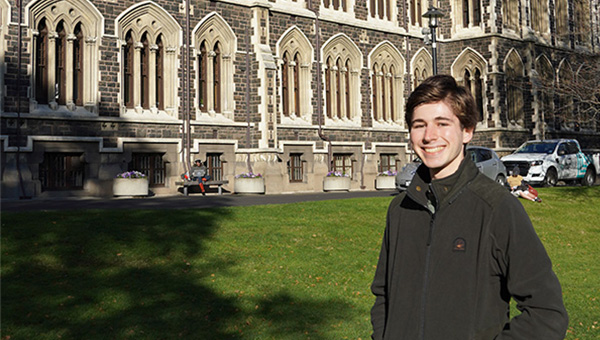Monday 10 July 2023 3:51pm

Henry loves research, and that's what really makes him an effective science communicator.
It all started in 2018 when the Zoology and Marine Science tauira Henry was in Year 12 and saved up for a microphone.
The rest is (natural) history.
He thought his interest in palaeontology and other scientific pursuits was quite niche, but once he started posting videos, he quickly realised that there was a huge potential audience, from Jurassic Park enthusiasts to young earth creationists.
YouTubers can earn money through a 'partner programme', in which they are paid for hosting ads on their videos.
Henry says a surprise subset of these watchers helped his channel to pass the 1000k subscribers and 4000 hours of watch time required to monetise.
“In November of 2019 I made a video talking about the misconceptions people have about Neanderthals, and it was pretty popular - by April 2020 it had 10k views.
“Suddenly it was picked up by the algorithm and it blew up. It was flooded with views from angry young earth creationists who don't believe in evolution, and by the end of the month it had 430k views.
“It was perfect timing really, it got me right past the barrier for monetisation, and really boosted the channel at a moment where everyone was at home watching videos- lockdown.”
That meant the channel was able to be both educational and the income could support his study. His experience during the pandemic really shaped his YouTube career, and his studies.
He began university a few weeks before the first lockdown was announced in early 2020 and decided to return home to do his first term online.
That proved to be tricky for him, and because of a range of factors, studying at home didn't work out.
He says he was “very” stressed at the time, but that in the end everything turned out well.
“Having to retake those papers, which made my degree four years of study instead of three meant that I was able to meet so many people I wouldn't have met if I had just sailed through.
“Without the struggles I faced at the beginning, I wouldn't be doing the cool things I am doing now.
“It all just worked out.”
Throughout 2020 the channel went from strength to strength, with the algorithm particularly loving a video about the Spinosaurus.
Henry now has 86.2k subscribers, which sometimes gives him pause.
“I think, who are all these people? That's a lot of people, its more than the population of North Dunedin!”
He says he decided not to show people his face until he reaches 100k subscribers, so he knows people are already coming to his channel for the content and will maybe then engage more with him as a person from there.
He hopes to do more 'in person' investigations after the face reveal, building on the success of his 'NZ bird of the week' series and exploring the “amazing” native plants and animals Aotearoa New Zealand has to offer.
When asked about his methods Henry summarised them succinctly:
“I just compile as much information as possible. I work to make it simple, accessible and interesting- and I always reference all of my sources.
“I want my videos to be the go-to place for information about a given topic.”